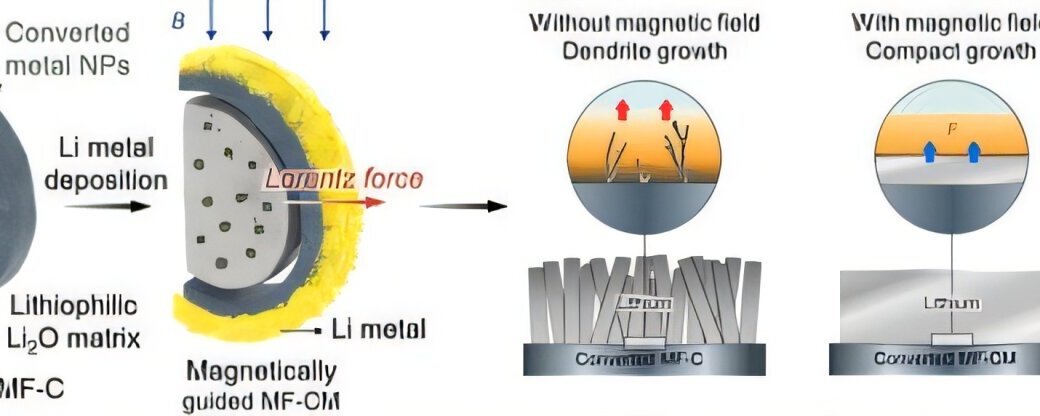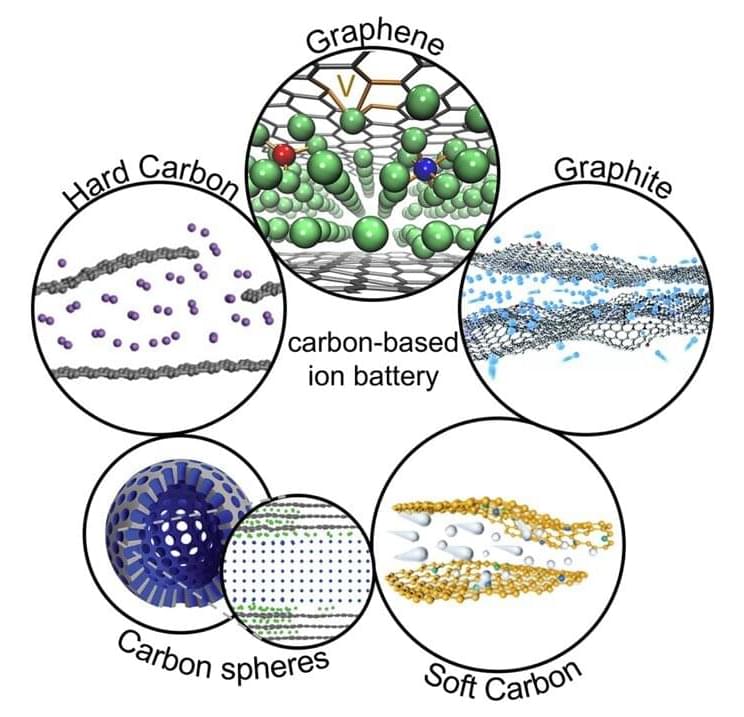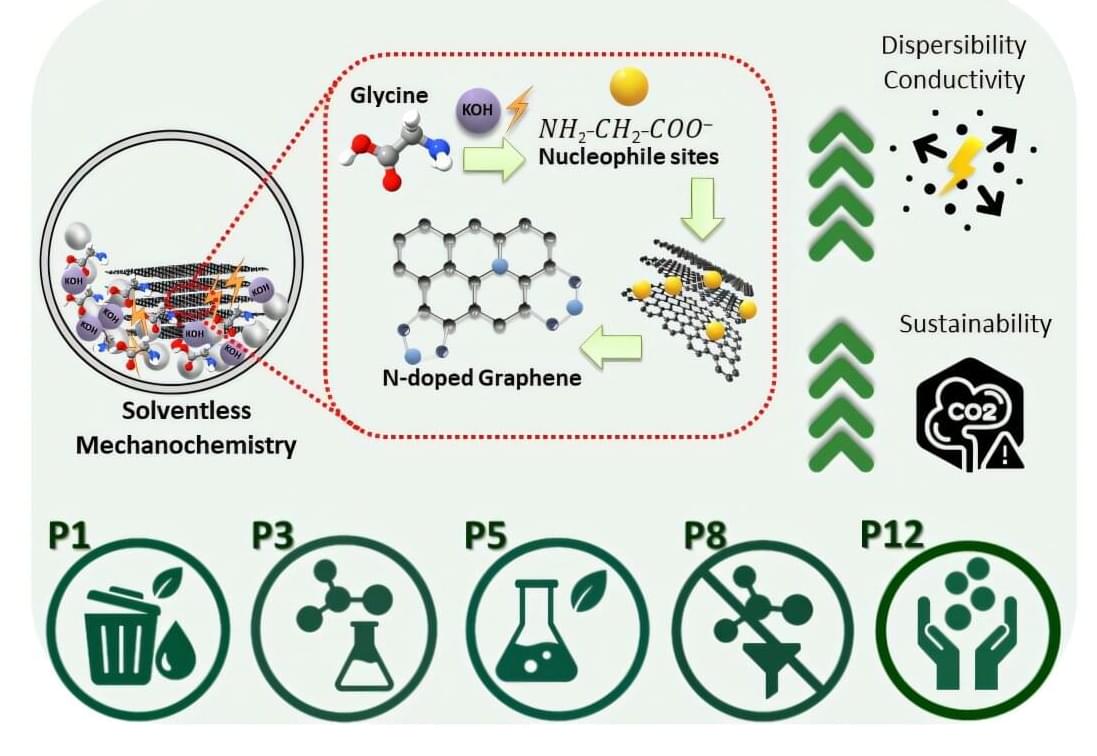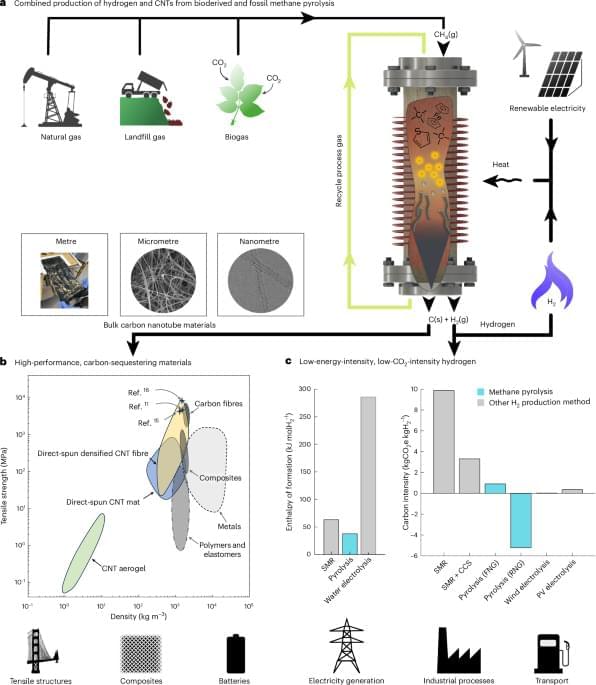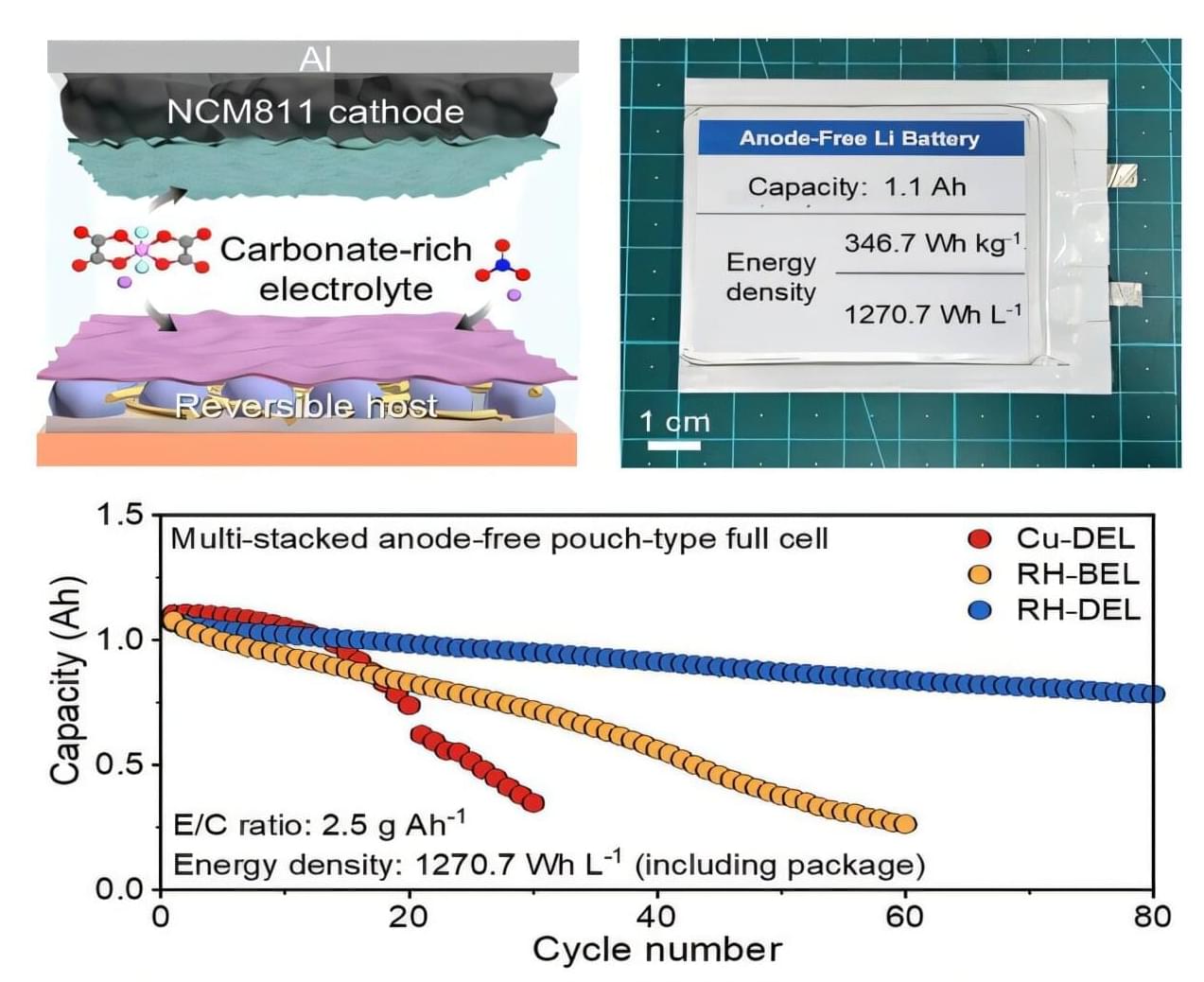A new battery technology has been developed that delivers significantly higher energy storage—enough to alleviate EV range concerns—while lowering the risk of thermal runaway and explosion.
A research team at POSTECH has developed a next-generation hybrid anode that uses an external magnetic field to regulate lithium-ion transport, effectively suppressing dendrite growth in high-energy-density electrodes.
A POSTECH research team—led by Professor Won Bae Kim of the Department of Chemical Engineering and the Graduate School of Battery Engineering, together with Dr. Song Kyu Kang and integrated Ph.D. student Minho Kim—has introduced a “magneto-conversion” strategy that applies an external magnetic field to ferromagnetic manganese ferrite conversion-type anodes.
